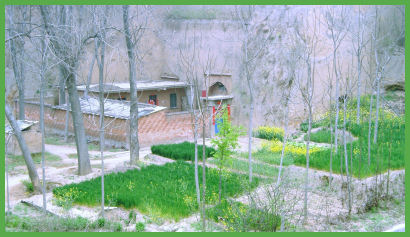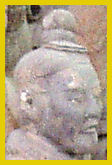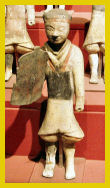QIN BUILDINGS
Qin buildings were almost always made out of wood whether a pavilion, a temple or a house. However rammed earth was used to build defences such as the walls which surrounded the major cities. Where wood was not freely available, clay bricks were used.
The walls below are from Pingyao and although rebuilt around 1100 AD remain in the same style and placement as the original walls.
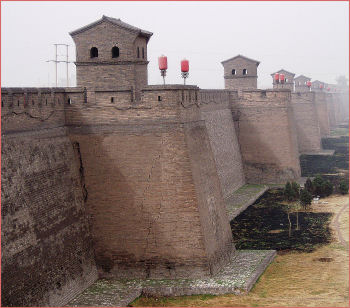
The walkway on top of the walls was wide enough for a carriage or cart to drive along with the outer rim being higher than the inner rim and crennelations and slots for defensive actions.
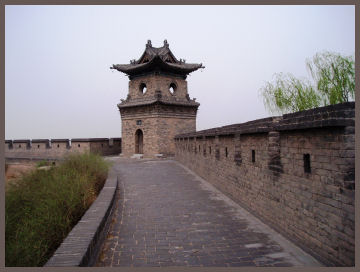
Pingyao is perhaps the oldest provincial city still existing today and behind its 11th and 12th century AD yard houses remain very old, single story, clay brick houses.
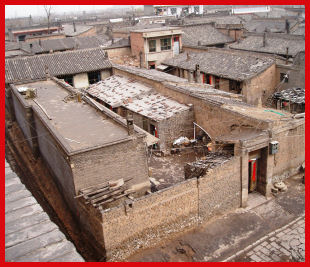
For many of the people cave houses, which they carved out themselves, were a more likely form of residence, particularly if they were farmers and did not live in towns. By carving the house into the old walls of rivers which no longer flowed, they gained insulation against the heat of summer and the cold of winter, could expand as they wanted to and did not use any of their precious farmland. So, in the northern provinces you still find houses such as these that follow. This one is near Xian and is a simple house of three rooms. The first is the sleeping and living area. The second is the kitchen and the third is where the animals and farming equipment is kept.
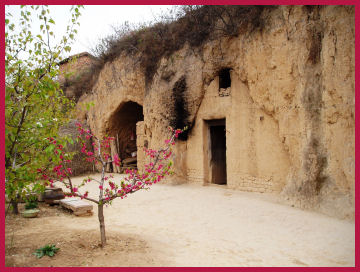
The cave house below is a further development on the one above. Even though it began the same way it has had other simple one story buildings built on to it and then enclosed in a compound. This particular house is in its own little valley in one of the twists and turns of the Huang He or Yellow River.
